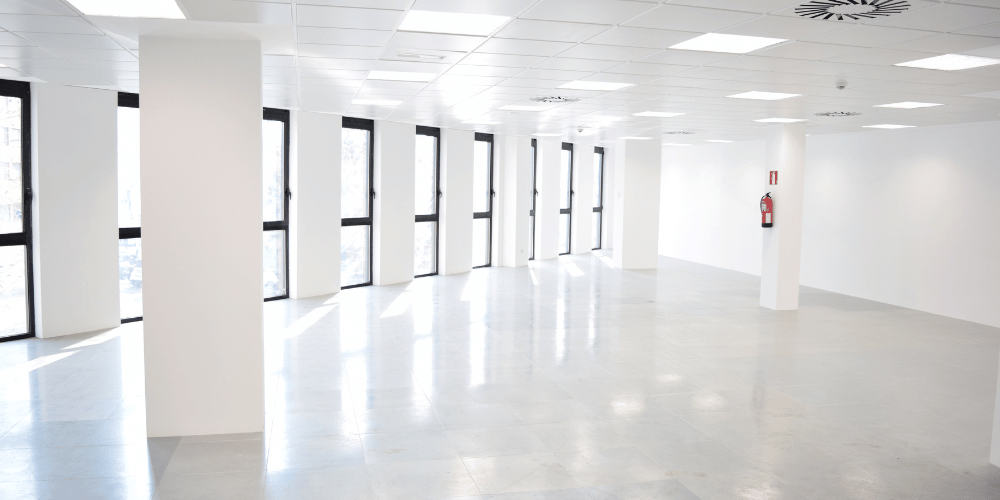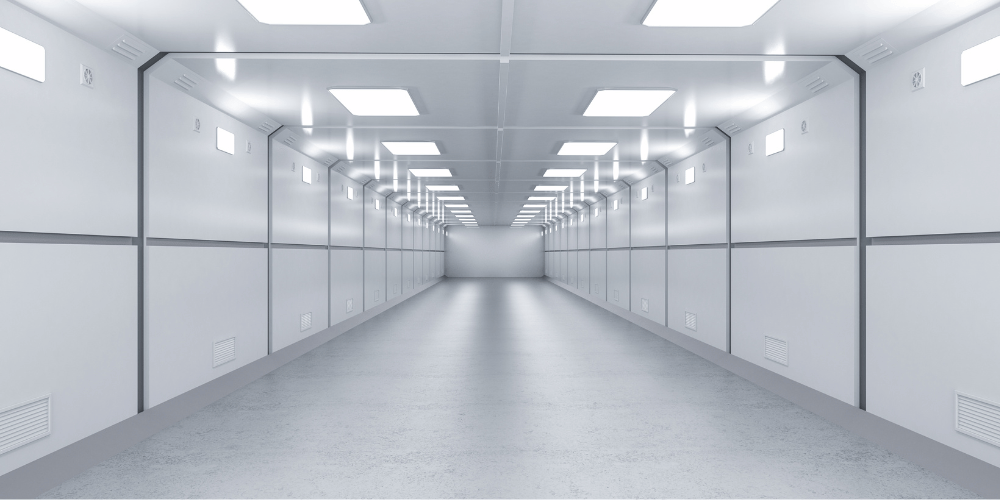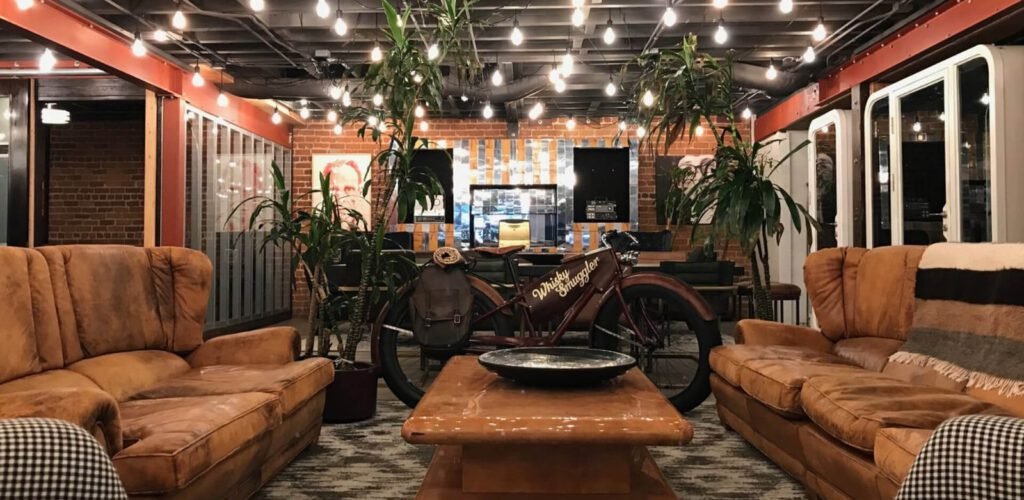Clean Rooms Explained: Clean Room Concept and Technology

A clean room, or clean room concept is a facility implementation ordinarily utilized as a part of a specialized industrial production or scientific research plant. Clean rooms are usually most important in the production of pharmaceutical and computer hardware items.
The basis of controlled workspaces containing sterile fittings is getting to know all the necessary information about safety standards and quality assurance for the future staff’s wellbeing.
That is why we can identify several different clean room classifications within the controlled spaces, as well as their adaptation to different risk levels.
According to these categorizations, most cleanrooms are positive-pressure rooms, but to ensure employee safety and production efficiency people many other clean room solutions are popular, such as:
- Retractable clean rooms,
- Custom-configured with multi-layered industrial air filtration,
- Modular clean rooms
Given that clean rooms have many designs and operating regulations, it can seem too complicated to understand and implement all the necessary standards, but the thing is – it doesn’t have to be as hard to build such an environment.
Focusing on the key questions and needs of your lab for a clean room concept, I will try to provide all the information needed to devise the most effective clean room environment.
What Is a Clean Room?
A clean room is a controlled environment where pollutants like dust, airborne microbes, aerosol particles, and chemical vapors are filtered out to provide the cleanest area possible. Typically used in manufacturing or scientific research, a clean room’s main purpose is to maintain a low level of environmental pollutants. This is crucial for the production of sensitive technology like semiconductors, pharmaceuticals, biotech, and precision electronics, as well as in scientific research where the presence of contaminants can skew results.
The cleanliness of a clean room is measured by the number of particles per cubic meter at a predetermined molecule size. The rooms are classified according to the cleanliness level of the air, based on standards such as ISO 14644-1 or the US Federal Standard 209E, which specify the number of particles 0.5 micrometers or larger permitted per cubic meter of air. For example, an ISO 5 clean room allows 3,520 particles of that size per cubic meter.
To achieve and maintain this high level of cleanliness, air is constantly filtered through HEPA or ULPA filters, and strict protocols are followed. Personnel working in clean rooms must wear specialized clothing to prevent contamination from skin flakes, hair, and clothing fibers. Access to clean rooms is also highly controlled, with air showers to remove particles from clothing and surfaces before entry.
Why Is a Clean Room Environment Important?
Some industrial products are sensitive and receptive to pollutants that get them contaminated or even destroyed when in contact. For example, medical/pharmaceutical products or electronic goods and medical devices with nanotechnology and artificial intelligence (AI) – all require a clean room, and even a healthy building to condition them.
What’s the Difference Between a Lab and a Cleanroom?
Although contamination in the laboratory can be controlled with the use of high-efficiency particulates, such as HEPA filters, their specifications for measurement of particulate air quality pollutants are not as effective.
Reliable and accurate measurements of particles at trace and ultra-trace concentrations are frequently required in a variety of scientific activities related to environmental, nutritional, and high-tech materials.
A lab is a space where scientists do their research, experiments, testing as well as manufacturing, but with no need for a (heavily) controlled environment.
For example, some pharmaceutical manufacturers need a highly controlled laboratory environment, while a local high school can have a lab where students conduct experiments under control because no environmental risks are expected with their actions.
A serious lab that needs to control temperature, humidity, static, etc, implements a clean room for the sake of protection of their products from contamination, and the integrity of examination processes.
Equipment is put in place to maintain the cleanroom conditions, including air filter and flow systems, as well as methods for accessing the used space.
Many cleanrooms come with special chambers called air showers where contaminants are blown off of the staff before they enter the clean room. Scientists working in the clean room are often required to wear clean room gowns or lab coats.

Clean Room Classification
Clean room classifications are based on the cleanliness level of the air within the clean room, which is determined by the number and size of particles per cubic meter of air. These classifications are essential for industries where the presence of dust, microbes, or chemical vapors can adversely affect manufacturing processes or research outcomes, such as in pharmaceuticals, biotechnology, semiconductor manufacturing, and scientific research.
The most widely recognized standards for clean room classification are ISO 14644-1 and the US Federal Standard 209E (now obsolete but still used in some contexts).
ISO 14644-1 Classification
ISO 14644-1 replaced Federal Standard 209E and provides a standard classification for clean rooms based on the concentration of airborne particles. The standard defines clean rooms in classes from ISO 1 to ISO 9. ISO 1 represents the cleanest environments and ISO 9 the least clean (comparable to normal room air). For example, an ISO 5 clean room is allowed to contain 3,520 particles of 0.5 micrometers or larger per cubic meter of air.
US Federal Standard 209E Classification
Before being superseded by ISO 14644-1, the US Federal Standard 209E was the benchmark for clean room classification. It defined clean room classes based on the number of particles 0.5 micrometers or larger per cubic foot of air, with classes ranging from Class 1 (the cleanest) to Class 100,000.
Key Differences and Considerations
- Particle Size and Count: Both standards focus on the size and number of particles allowed per volume of air. The primary difference is the volume measurement (cubic meters for ISO vs. cubic feet for Federal Standard) and the classification naming convention.
- Measurement and Verification: Regular monitoring and verification are critical to ensure that a clean room meets its designated classification. This involves using particle counters to measure the concentration of airborne particles.
- Environmental Control: To achieve and maintain the required cleanliness level, clean rooms use HEPA or ULPA air filters, control airflow patterns, and maintain positive pressure to prevent unfiltered air from entering.
- Personnel Protocol: Personnel are a significant source of contamination in clean rooms. Strict protocols, including wearing specialized garments and using air showers, are necessary to minimize introduced contaminants.
Clean Room Environment – Personnel Safety & Quality Assurance
A clean room environment, designed to limit contamination and control air quality, demands rigorous safety protocols for personnel and strict measures for quality assurance. These environments are critical in industries such as pharmaceuticals, biotech, semiconductor manufacturing, and aerospace, where even minute levels of pollutants can compromise product integrity or experimental results. Ensuring personnel safety and product quality in such settings involves several key components:
Personnel Safety in a Clean Room
- Training and Awareness: Individuals working in clean rooms undergo comprehensive training on proper procedures, contamination control, and the use of personal protective equipment (PPE). This training is vital for minimizing human-borne contamination and ensuring worker safety.
- Personal Protective Equipment (PPE): To prevent contamination from skin flakes, hair, and clothing, personnel are required to wear specialized garments, which may include overalls, hoods, gloves, face masks, and shoe covers. The level of PPE depends on the clean room classification.
- Behavior Protocols: Actions and movements within a clean room are controlled to reduce the release of contaminants. This includes practices like slow and deliberate movements, avoiding touching surfaces unnecessarily, and following specific procedures for entering and exiting the space.
- Health Monitoring: Regular health checks may be required for personnel to detect and manage health issues that could increase contamination risks, such as skin conditions or respiratory problems.
- Clean Air and Contamination Control – Monitoring Facility Parameters
Quality Assurance
- Environmental Monitoring: Continuous monitoring of the clean room environment ensures compliance with the specified classification standards. This includes tracking temperature, humidity, and particularly the concentration of airborne particles.
- Equipment and Material Control: All equipment and materials entering the clean room undergo rigorous cleaning and, in some cases, sterilization. This minimizes the introduction of external contaminants.
- Process Control: Manufacturing or experimental processes within clean rooms are designed and managed to minimize contamination. This includes the use of clean room-compatible materials and chemicals, as well as ensuring equipment is properly cleaned and maintained.
- Documentation and Validation: Detailed records of procedures, training, cleaning schedules, equipment maintenance, and environmental monitoring are maintained for accountability and compliance purposes. Validation processes confirm that the clean room and its operations meet the required standards and are capable of producing safe, high-quality products.
- Contamination Response: Protocols for responding to contamination incidents are in place to quickly address and mitigate any breaches in cleanliness. This includes procedures for cleaning, investigation, and corrective actions to prevent recurrence.
Cleanroom technology is the foundation for highly sensitive spaces in modern manufacturing, whether you work in pharmaceutical production, biotechnology, or else. IPG can be of service in finding a solution for all of your demands for a clean room.




